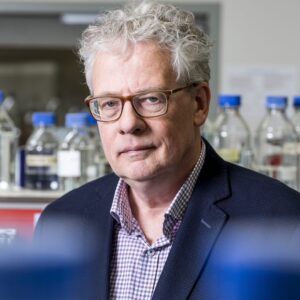
Restoring memory in brain aging
27 July 2021

27 July 2021
A recent study published in Molecular Psychiatry demonstrates that the decline in neuroplasticity and memory during aging can be restored by changing the extracellular matrix of the brain – ‘scaffolding’ around nerve cells called perineuronal nets (PNNs). PNNs are involved in the control of synaptic plasticity during development and in adulthood.
PNNs contain compounds known as chondroitin sulphates. Some of these, such as chondroitin 4-sulphate, inhibit the action of the networks, inhibiting neuroplasticity; others, such as chondroitin 6-sulphate (C6ST), promote neuroplasticity. As we age, the balance of these compounds changes, and as levels of chondroitin 6-sulphate decrease, so our ability to learn and form new memories changes, leading to age-related memory decline.
Bart Nieuwenhuis, a former PhD student at the NIN and the Center for Brain Repair, and Joost Verhaagen contributed by generating adeno-associated viral vectors that directed the expression C6ST that changed the composition of PNNs. Transgenic deletion of C6ST resulted in very early memory loss, whereas AAV-mediated over-expression of C6ST recued memory deficits in aged mice. The results suggest that modification of PNNs by gene therapy (or by pharmacological intervention) is a potential strategy to improve age-related memory impairment.
The study was led by James Fawcett (John van Geest Center for Brain Repair, Cambridge) and Jessica Kwok (University of Leeds). Dr Jessica Kwok said: “We saw remarkable results when we treated the aging mice with this treatment. The memory and ability to learn were restored to levels they would not have seen since they were much younger.”
Source: Cambridge University

The Friends Foundation facilitates groundbreaking brain research. You can help us with that.
Support our work